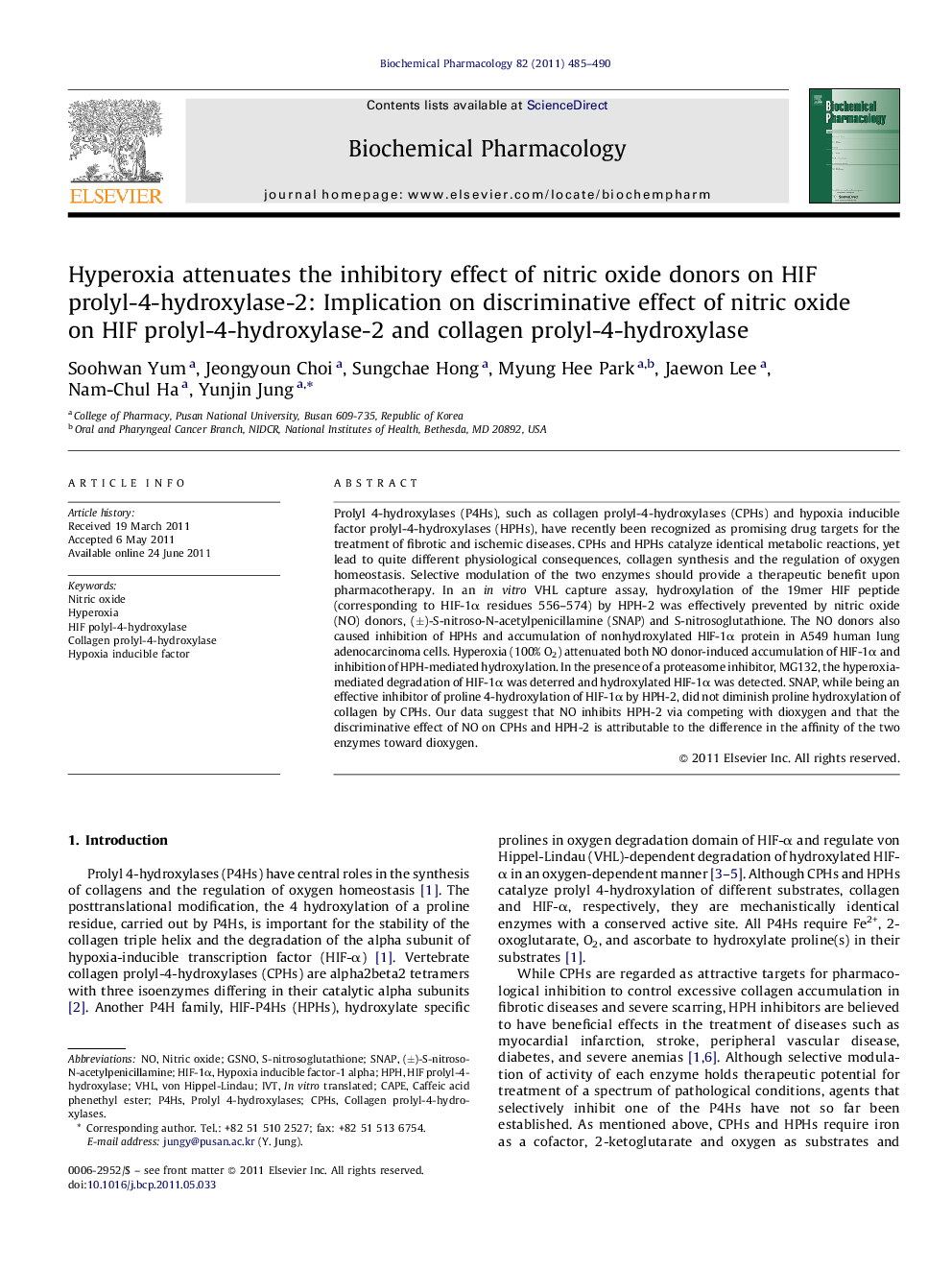| Article ID | Journal | Published Year | Pages | File Type |
|---|---|---|---|---|
| 2513128 | Biochemical Pharmacology | 2011 | 6 Pages |
Prolyl 4-hydroxylases (P4Hs), such as collagen prolyl-4-hydroxylases (CPHs) and hypoxia inducible factor prolyl-4-hydroxylases (HPHs), have recently been recognized as promising drug targets for the treatment of fibrotic and ischemic diseases. CPHs and HPHs catalyze identical metabolic reactions, yet lead to quite different physiological consequences, collagen synthesis and the regulation of oxygen homeostasis. Selective modulation of the two enzymes should provide a therapeutic benefit upon pharmacotherapy. In an in vitro VHL capture assay, hydroxylation of the 19mer HIF peptide (corresponding to HIF-1α residues 556–574) by HPH-2 was effectively prevented by nitric oxide (NO) donors, (±)-S-nitroso-N-acetylpenicillamine (SNAP) and S-nitrosoglutathione. The NO donors also caused inhibition of HPHs and accumulation of nonhydroxylated HIF-1α protein in A549 human lung adenocarcinoma cells. Hyperoxia (100% O2) attenuated both NO donor-induced accumulation of HIF-1α and inhibition of HPH-mediated hydroxylation. In the presence of a proteasome inhibitor, MG132, the hyperoxia-mediated degradation of HIF-1α was deterred and hydroxylated HIF-1α was detected. SNAP, while being an effective inhibitor of proline 4-hydroxylation of HIF-1α by HPH-2, did not diminish proline hydroxylation of collagen by CPHs. Our data suggest that NO inhibits HPH-2 via competing with dioxygen and that the discriminative effect of NO on CPHs and HPH-2 is attributable to the difference in the affinity of the two enzymes toward dioxygen.
Graphical abstractFigure optionsDownload full-size imageDownload as PowerPoint slide
